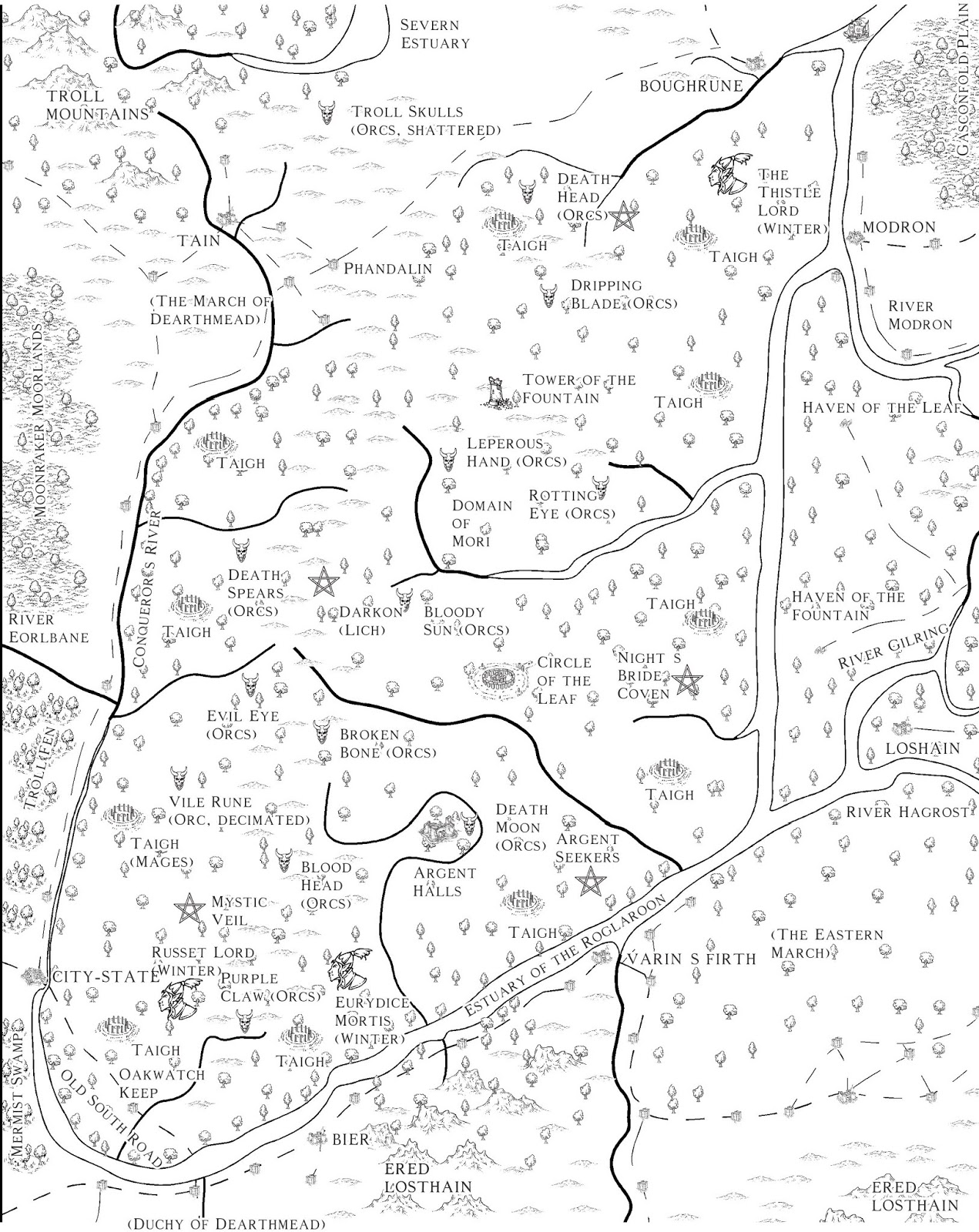The1True
8, 8, I forget what is for
Take this one further with the Path Crawl, and you can mention diverging paths (that are sometimes not paths at all*) along the way so PC's traveling from Point to Point can still explore without it turning into a grindy procedural if they're not into Hex clearing.
*A Path could be as abstract as the PC's spotting a wrecked cart by the side of the road and investigating, or hearing weird animal noises off in the rhubarb, or seeing a particularly compelling piece of scenery that deserves exploration. The players can decide if they have the time and resources to get distracted with the confidence that the distraction won't lead them wildly off course from their original Point destination (although of course it could turn into a major distraction if that's what ends up being fun for everyone).
*A Path could be as abstract as the PC's spotting a wrecked cart by the side of the road and investigating, or hearing weird animal noises off in the rhubarb, or seeing a particularly compelling piece of scenery that deserves exploration. The players can decide if they have the time and resources to get distracted with the confidence that the distraction won't lead them wildly off course from their original Point destination (although of course it could turn into a major distraction if that's what ends up being fun for everyone).



